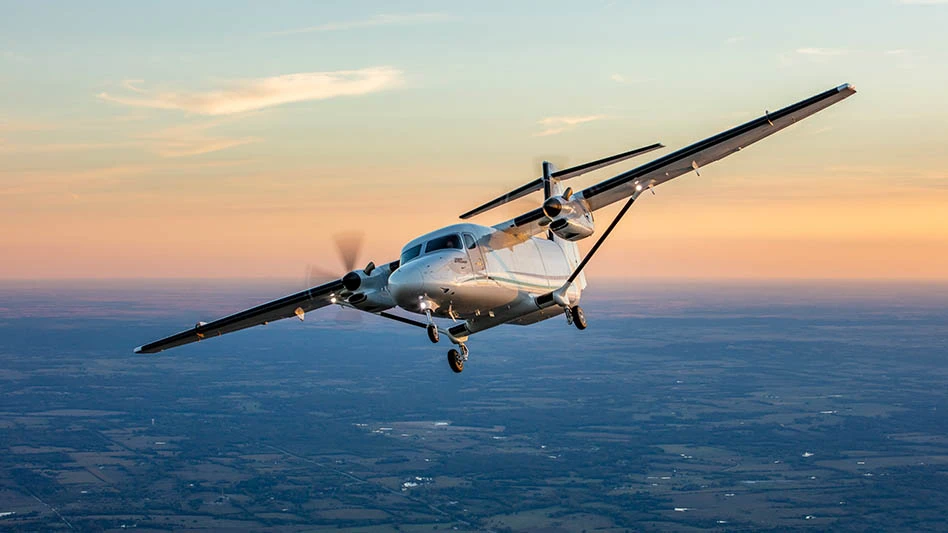
Carter Aviation Technologies four-place personal air vehicle (PAV)
Wichita Falls, TX-based Carter Aviation Technologies has developed a new term in aviation technology – slowed rotor/compound (SR/C). Developing this technology began in 1994, when Carter first created the gyroplane prototype, where rotor and wings capability combine to provide vertical take-off and landing (VTOL) capability with high-speed cruise. In 2005, Carter proved the validity of this technology by breaking through the Mu-1 Barrier – making the gyroplane the first ever rotorcraft to attain high-Mu flight.
- The 45ft diameter rotor will have the ability to store more than 1,000hp, for a short time period, in order to provide exceptional jump takeoff capabilities.
- The tilting mast is 54" in height and tilts forward 15° or aft 30° moving the rotor center of lift fore and aft to keep the aircraft level to the ground at slow speeds.
- The landing gear absorbs up to 5gs on impact and can roll over objects or ruts up to 6'' high during taxi, creating a much higher level of safety for the aircraft.
- A single tail boom with a horizontal stabilizer, and three vertical stabilizers, replaces the twin tail boom. The center stabilizer is in the propeller slipstream for optimum control.
- The rear seats are tiered, giving passengers a clear view through the large front window, while the full canopy tilts forward, allowing easy access to the cockpit and cargo area.
- Situated under the rotor mast are the rear seats and cargo area so that whether the aircraft is traveling empty or with a full load, it will have little effect on the aircraft’s CG.

Carter has determined that their technology is scalable from the size of a small, single-place autogyro to that of a 767, creating an enormous market for their SR/C technology. cartercopters.com

Explore the April May 2010 Issue
Check out more from this issue and find your next story to read.
Latest from Aerospace Manufacturing and Design
- The Partner Companies acquires Precision Eforming
- Hall Effect angle sensors
- July is for learning – so drop in for this month’s second Manufacturing Lunch + Learn
- Essential strategies to protect your data
- NASA selects instruments for Artemis lunar terrain vehicle
- Twin-cutter boring head
- Bell awarded funding for X-plane build phase of SPRINT program
- Shaft coupling clamps





